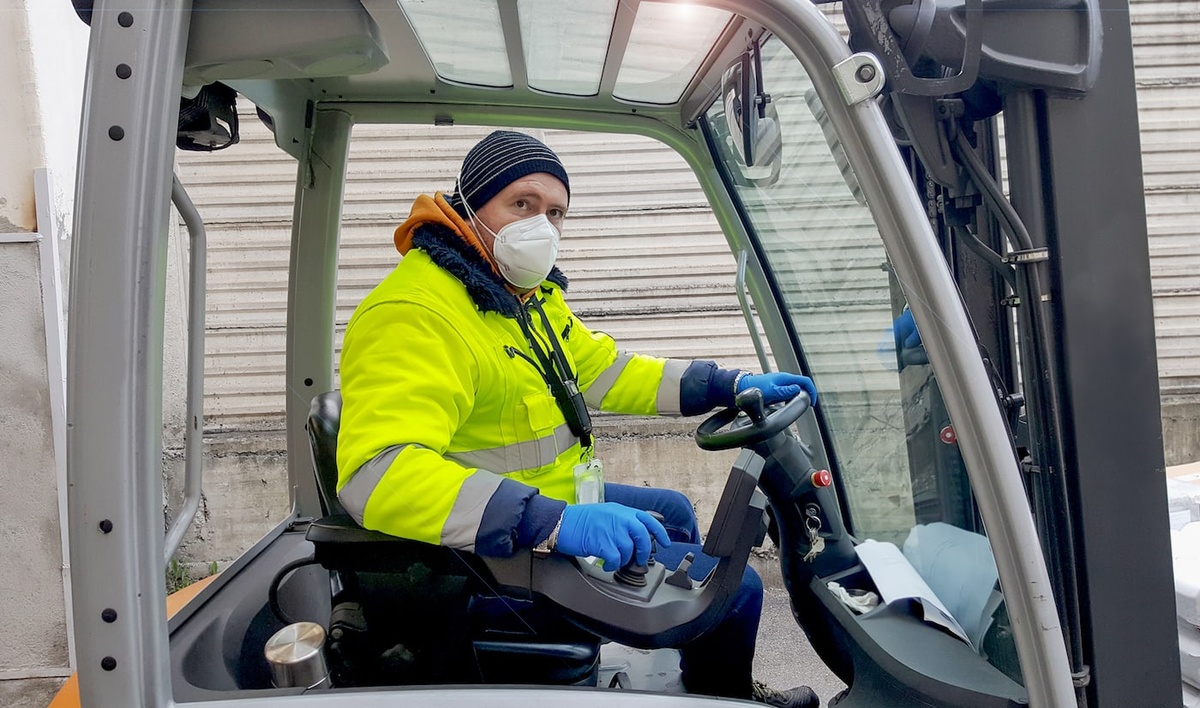
Risk levels vary across industries. There are doctors on the front lines, treating patients with Covid-19. Then there are the people working from home and engaging in total isolation. But, for everyone in between, it’s sometimes difficult to know how risky a given job might be when it comes to catching the coronavirus.
If you’re concerned about your risk and exposure level—especially when searching for a new job in an unfamiliar workplace—you’re not alone. Below we break down the various positives and challenges of different industrial jobs as they apply to staying safe during the coronavirus pandemic. While it’s impossible to pinpoint an exact exposure risk to Covid-19, the more information you have, the easier it is to make an informed decision.
Your exposure risk
First, understand your exposure risk level since this will determine what sort of precautions you and your employer should be taking to maintain a safe work environment. This is particularly important if you are over age 65 or have underlying health conditions like diabetes or a heart condition since you might be at higher risk for more severe illness.
Risk factors by industry
It’s difficult to determine an exact risk assessment since every role within an industry will have different challenges when it comes to safety. But there are some general considerations that we can break down by industry when it comes to risk.
|
Industry |
Positives |
Challenges |
|
Food processing |
Emphasis on workplace sanitation |
• Tight quarters (hard to maintain 6-ft distance between workers) • Difficult to wear masks or alter workstations (e.g. install plexiglass dividers) |
Food processing employees are essential workers, vital to maintaining the country’s food infrastructure. And this industry employs hundreds of thousands of people. Nationwide, the meat and poultry processing industry alone employees about 500,000 people.
But working conditions often make it difficult for employees to maintain social distancing of at least 6 ft. So far COVID-19 cases among U.S. workers in 115 meat and poultry processing facilities were reported by 19 states, according to the CDC. Among approximately 130,000 workers at these facilities, there were 4,913 cases. So there is a real risk of spread.
If you’re considering working in food processing, look for employers following CDC recommendations for increased workplace safety. These include:
|
Industry |
Positives |
Challenges |
|
Warehouse |
Ability to lower your risk depending on the role. (e.g. operating an electric pallet jack in a larger pick environment creates natural distancing). |
High-volume e-commerce and small-item pick settings leads to tight quarters |
If you’re looking for an industrial role, chances are you’re considering warehouse work.
With millions of Americans ordered to shelter in place over the last few months, there’s been a huge demand for items to be delivered. So it’s no surprise that shipping and warehouses are one of the main industries looking to hire hundreds of thousands of workers.
Risk factors for warehouse work very much depend on the role you’re applying for and steps the company is taking to reduce risks. Picker roles for smaller items in a high-volume warehouse may make it difficult, though not impossible, to maintain distancing with other workers. But there are other roles that would put you at a much reduced risk, such as operating an electric pallet jack.
If you are considering a job in warehouses look for:
|
Industry |
Positives |
Challenges |
|
Trucking |
Natural social distancing. Limited contact since most of the day is spent solo in the cab. |
• Interactions on the route—from deliveries to gas stations—require extra vigilance. • More challenging to engage in frequent handwashing on the road. • Potential to fall sick while far away from home. |
Trucking is perhaps the industry that best lends itself to natural social distancing. Drivers spend most of their day solo in their cab, though this limited contact has its own challenges.
Drivers should follow CDC guidelines and take extra precautions to stay safe:
|
Industry |
Positives |
Challenges |
|
Manufacturing |
Many different types of roles with varying levels of transmission. Potential to more easily alter your role if you’re at risk. |
• Continued contact for an entire shift • Interaction with high-touch shared surfaces such as tools |
Manufacturing is a general term that encompasses a wide range of jobs—from a solo CNC machine programmer to an employee working in tight quarters on an assembly line. For this reason, risk level will depend on the specific work you’re doing.
Think about these four factors when determining risk for a specific manufacturing role:
Other factors to consider
While considering your exposure risk level at work, it’s also very important to keep things in context. Consider: